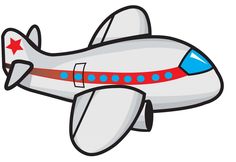You are on a flight, halfway across the Atlantic Ocean at the start of a much needed vacation, binge watching that new show everyone has been talking about but you’ve never had time to see. Suddenly, the screen freezes and an overhead announcement interrupts your zen-like, screen-induced partial stupor. “Is there a doctor on board?”
The most common ‘emergency’ encountered during commercial flights is thought to be syncope and near-syncope (there are no formal rules about reporting). This is usually due to some combination of decreased cabin pressure, increased insensible losses (lower oxygen pressure resulting in hyperventilation) and dehydration. Usually elevating the legs and increasing PO hydration will improve symptoms.
But what if there is a passenger who is truly, seriously ill?
Unplanned landings have been estimated to cost up to $900,000. Plus, it can be dangerous to divert from the flight plan and will likely cause scheduling nightmares for sometimes up to 100s of other passengers. It is a really big deal. The decision to make an unscheduled emergency landing should not be taken lightly, and ultimately belongs to the pilot of the aircraft.
Nonetheless, the pilot may ask for your recommendation as a physician. The following list (taken directly from the reference below), while not complete, is generally agreed upon by most entities to be justification for an emergency landing:
- Chest pain, shortness of breath, or severe abdominal pain that does not improve with use of the recommended initial interventions
- Cardiac arrest
- Concern for acute coronary syndrome
- Severe dyspnea
- Persistent unresponsiveness
- Stroke
- Refractory seizure
- Severe agitation
References, including more on how to approach specific emergencies and some legal info:
https://pulmccm.org/review-articles/in-flight-medical-events-emergencies-part-1/
https://pulmccm.org/review-articles/in-flight-medical-events-emergencies-part-2/
Martin-Gill C, Doyle TJ, Yealy DM. In-Flight Medical Emergencies: A Review. JAMA. 2018;320(24):2580–2590. doi:10.1001/jama.2018.19842

